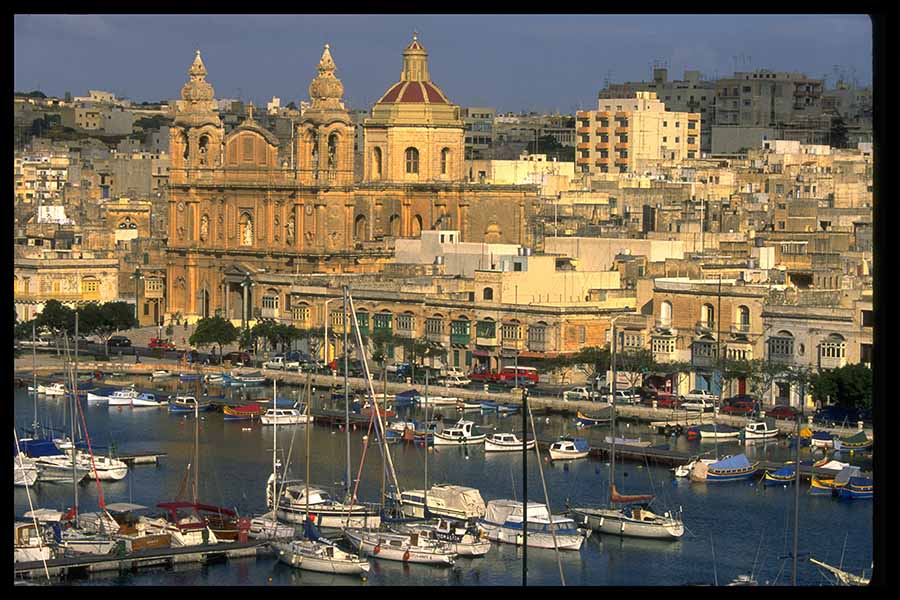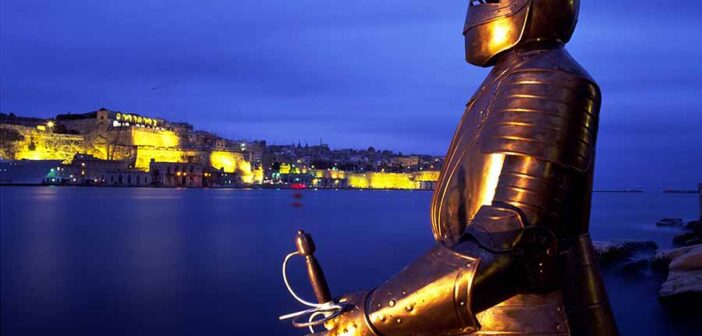
Malta, a Mediterranean archipelago comprising the islands of Malta, Gozo, and Comino, is a treasure trove for culture tourists, offering a rich tapestry of history, architecture, and traditions spanning over 7,000 years.
With its strategic location between Europe and North Africa, Malta has been shaped by Phoenicians, Romans, Arabs, Knights of St. John, and the British, resulting in a unique cultural blend. In 2025, culture tourists can expect immersive experiences at UNESCO World Heritage Sites, vibrant festivals, and new initiatives enhancing accessibility and sustainability. Below, I outline what visitors can expect, highlight new developments for 2025, and list the best-known cultural sites across the archipelago, incorporating off-the-beaten-track options for a deeper experience.
Culture tourists visiting Malta can anticipate a journey through millennia of history, vibrant local traditions, and a welcoming atmosphere, all set against a backdrop of stunning Mediterranean landscapes.
- UNESCO World Heritage Sites: Malta hosts three UNESCO sites: Valletta, a fortified Baroque city; the Ħal Saflieni Hypogeum, a 6,000-year-old underground burial site; and seven megalithic temples, including Ġgantija and Ħagar Qim, among the world’s oldest free-standing structures. These sites offer insights into Neolithic, medieval, and early modern eras.
- Museums and Catacombs: Expect world-class museums like the National Museum of Archaeology in Valletta and hidden gems like Rabat’s catacombs, showcasing Roman and early Christian heritage. Guided tours provide context, with audio-visual presentations (e.g., The Malta Experience) available in multiple languages.
- Architecture: From Valletta’s grand churches, such as St. John’s Co-Cathedral with its Caravaggio masterpieces, to Mdina’s medieval walls and Gozo’s baroque basilicas, Malta’s architecture reflects its diverse influences.
- Valletta (Malta) – UNESCO World Heritage Site : Malta’s capital, built by the Knights of St. John in the 16th century, is a Baroque masterpiece with over 300 monuments. Key attractions include St. John’s Co-Cathedral (housing Caravaggio’s The Beheading of St. John), the Grandmaster’s Palace (with its armory and frescoes), and Upper Barrakka Gardens (offering Grand Harbour views and daily cannon salutes). The National Museum of Archaeology displays Neolithic artifacts, while events like Notte Bianca illuminate the city’s streets. Compact and walkable, Valletta blends history with modern cultural events. The Triton Fountain and Valletta Waterfront are vibrant meeting points. Visitors praise the city’s golden limestone glow and lively atmosphere. Explore the lesser-visited Casa Rocca Piccola, a 16th-century noble home with WWII shelters and a resident parrot, offering intimate insights into Maltese aristocracy.
- Ħal Saflieni Hypogeum (Paola, Malta) – UNESCO World Heritage Site : A 6,000-year-old underground burial complex (4000–2500 BCE), this Neolithic site features rock-cut chambers with acoustic resonance, notably the Oracle Chamber (110–120 Hz vibrations). Used for centuries, it’s a UNESCO site for its cultural significance, offering clues to prehistoric rituals. Limited to 80 visitors daily, booking months in advance is essential. The eerie ambiance and advanced engineering captivate visitors, with guided tours explaining its spiritual role. Reviewers describe it as “mind-boggling” for its age and preservation. Nearby St. Cataldus Catacombs in Rabat, smaller and less crowded, offer a complementary early Christian experience with hidden tunnels and ancient bones.
- Ġgantija Temples (Xagħra, Gozo) – UNESCO World Heritage Site : Dating to 3600–3200 BCE, these megalithic temples are among the world’s oldest free-standing structures, predating Stonehenge and the Pyramids. Dedicated to a fertility cult, they feature massive limestone slabs and altars. The adjacent visitor center provides context through artifacts and interactive displays. Set in Gozo’s rural landscape, Ġgantija offers a serene contrast to Malta’s bustle. Visitors appreciate the temples’ scale and the Festival Mediterranea’s guided tours. Gozo’s traditional crafts (e.g., lace-making) nearby enhance the cultural experience. The lesser-visited Ta’ Kola Windmill in Xagħra, a restored 18th-century structure, showcases Gozo’s agricultural heritage with tools and living quarters.
- Mdina (Malta) : Known as the “Silent City,” Mdina is a walled medieval town and former capital, with narrow streets, a Baroque cathedral, and aristocratic palaces like Palazzo Falson (a historic house museum with art and antiques). Its 4,000-year history includes Roman and Arab influences, and its car-free ambiance enhances the timeless feel. Bastion Square offers panoramic views, while the Mdina Dungeons provide a gruesome look at medieval justice. Visitors love the quiet charm, especially in the afternoon when crowds thin (around 2 PM recommended). Adjacent Rabat’s St. Paul’s Grotto, where St. Paul reportedly stayed in 60 CE, and the Wignacourt Museum with Roman artifacts offer a quieter, faith-based cultural detour.
Vibrant Cultural Events and Festivals:
- Village Festas: These religious celebrations, held year-round but peaking in summer, feature processions, fireworks, and traditional foods like pastizzi. The Żabbar bicycle pilgrimage to the Madonna tal-Grazzja (first Sunday after 8 September) is a unique cultural event for cyclists and spectators.
- Music and Arts: Malta hosts international festivals, such as the Valletta Baroque Festival and Notte Bianca, with street performances, concerts, and open museums. Gozo’s Festival Mediterranea (October–November) blends opera, lectures, and archaeological tours.
- Culinary Culture: Expect rustic Maltese cuisine influenced by Italian, British, and Middle Eastern flavors, with dishes like fenkata (rabbit stew) and ġbejna (local cheese). Food tours in Valletta or Marsaxlokk’s fish markets offer cultural immersion.
Immersive and Accessible Experiences:
- Guided Tours: Walking tours in Valletta, Mdina, or Birgu provide historical context, often led by local experts. Free tours (e.g., Colour My Travel) are available, though tipping is customary. Specialized tours, like those visiting St. Paul’s Grotto, cater to faith-based tourists.
- Language and Hospitality: English and Maltese are official languages, making communication easy. Locals are renowned for warmth and generosity, as noted in historical accounts of St. Paul’s shipwreck in 60 CE.
- Compact Exploration: Malta’s small size (316 km²) allows easy access to sites via efficient buses (hub in Valletta), taxis (e.g., Bolt, €1.5/km), or ferries to Gozo and Comino. Valletta’s pedestrianized zones are ideal for leisurely strolls.
Visitor Experience:
- Ambiance: Expect golden limestone architecture glowing under 300 days of sunshine, vibrant harbors, and a blend of solemn history and lively street life. Reviews highlight transformative experiences, from the Hypogeum’s eerie chambers to Mdina’s silent charm.
- Cost: Entry fees range from €5–15 for museums and temples; the Malta Pass (€50–100 for 1–3 days) covers 40 attractions. Budget dining (pastizzi €0.50–€1) and bus passes (€21/week) keep costs low.
- Duration: A 4–7 day stay allows exploration of key sites, day trips to Gozo/Comino, and festival participation, with Valletta as a convenient base.
What’s New for Culture Tourists in Malta for 2025
- Digital Tourism Roadmap: Malta’s 2025 strategy includes apps and platforms for cultural tourists, such as VisitMalta.com’s planned cultural section with downloadable maps, event calendars, and virtual tours of sites like Valletta’s fortifications.
- Sustainability Initiatives: The Malta Tourism Authority is introducing measurable sustainability indicators, ensuring cultural sites adopt eco-friendly practices (e.g., reduced plastic at festivals, energy-efficient museum lighting). This aligns with Malta’s goal to balance tourism growth (2.7m visitors annually pre-COVID) with heritage preservation.
- Malta Pass Expansion: The Malta Pass will include new cultural attractions in 2025, such as guided walks along revived pilgrimage routes (e.g., XirCammini’s Way of St. James), enhancing access to spiritual sites.
- Valletta Upgrades: Post-2018 European Capital of Culture investments continue, with restored sites like the Grandmaster’s Palace and new interpretive displays at St. John’s Co-Cathedral, improving visitor experiences.
- Gozo Cultural Hubs: Gozo is positioning itself as a distinct cultural destination, with new signage at Ġgantija and expanded visitor centers in Victoria, catering to tourists seeking rural heritage.
- Birgu Regeneration: Following Marsaxlokk’s 2023 project, Birgu’s Three Cities are seeing enhanced pedestrian zones and cultural trails in 2025, making this less touristy area more accessible for exploring Knights-era history.
- XirCammini Pilgrimage Routes: Collaborative efforts with the Malta Tourism Authority are reviving ancient caminos, including St. Paul’s Way, linking sites like St. Paul’s Grotto and Rabat’s catacombs. New 2025 guides and markers enhance spiritual journeys.
- Faith-Based Exhibits: Temporary exhibits at St. Paul’s Grotto and the Wignacourt Museum will highlight St. Paul’s 60 CE shipwreck, with artifacts and digital reconstructions planned for spring 2025.
Planning Tips:
- Booking: Reserve tickets for the Hypogeum and major festivals (e.g., Fireworks Festival) early via HeritageMalta.org or VisitMalta.com. The Malta Pass saves on entry fees for sites like Valletta’s museums and Mdina’s palaces.
- Transport: Valletta’s bus hub connects to most sites (€2–3/ticket). Ferries to Gozo (45 minutes, €4.65 return) and Comino are bike-friendly. Taxis (Bolt, eCab) or electric mini-cabs in Valletta (€3–5) navigate narrow streets.
- What to Bring: Comfortable shoes for cobblestone streets, modest clothing for churches, and a reusable water bottle (tap water is safe). Summer requires sunblock; winter (10–15°C) may need a light jacket.
- Cultural Etiquette: Respect religious sites by dressing modestly and keeping noise low during festas. Tipping (€1–2) is appreciated on free tours.
In 2025, culture tourists in Malta can expect a captivating blend of ancient history, Baroque grandeur, and vibrant traditions, enriched by new events like the St. Lawrence ‘Hidden Gems’ and digital enhancements for seamless planning. Valletta, the Ħal Saflieni Hypogeum, Ġgantija Temples, and Mdina stand out as must-visit sites, while off-the-beaten-track gems like Casa Rocca Piccola, St. Cataldus Catacombs, and Ta’ Kola Windmill offer deeper cultural insights. Malta’s compact size, 300 days of sunshine, and warm hospitality make it an ideal year-round destination for exploring its 7,000-year heritage
- Aer Lingus and Ryanair both fly direct from Dublin to Malta. Ryanair also flies from Belfast and Shannon while Jet2 flies from Belfast. Visitmalta.com offers trail maps and event updates.




